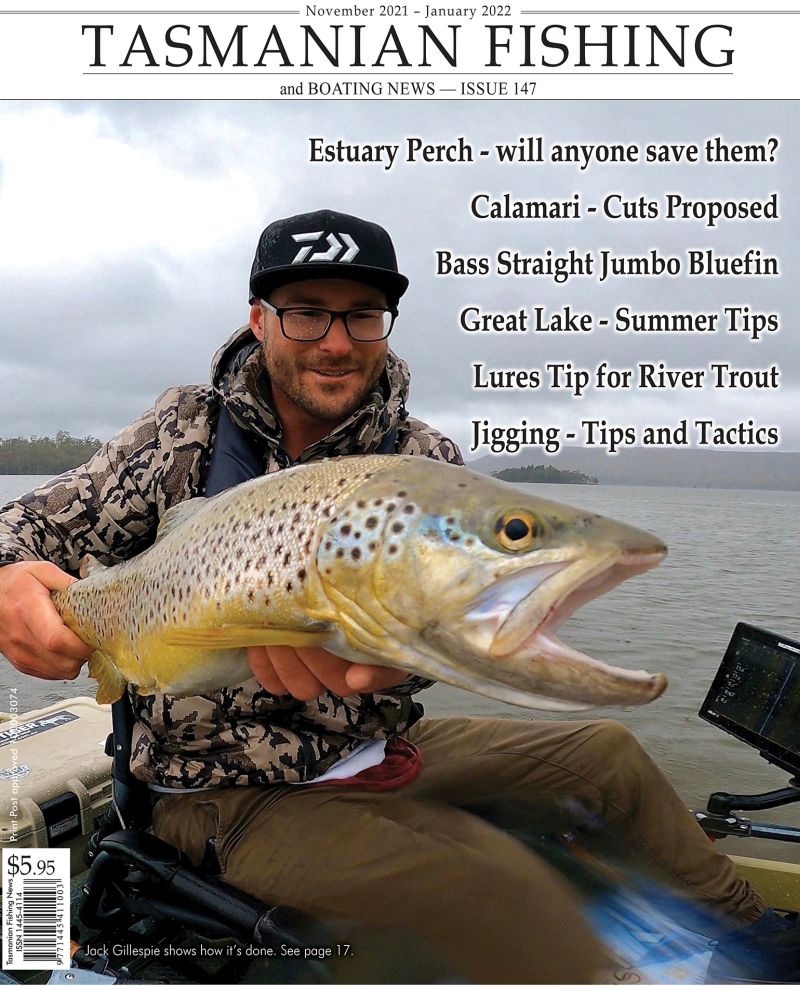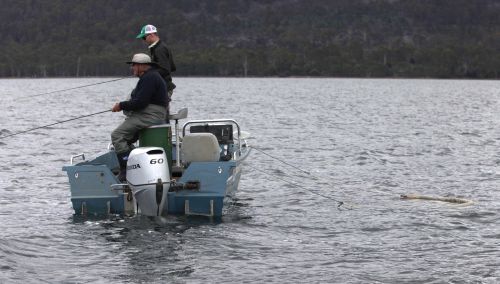From the Archives ...
Tiny creeks and sea run trout - Christopher Bassano
Presented from Issue 105, August 2013
Christopher Bassano fishes over 250 days a year. This interview was recorded just before he headed off to fish for Australia in the World Fly Fishing Championships in Norway 14-17 August 2013.
I live on a small stream and at the start of the season I like to go off on a bit of a discovery mission and fish the headwaters of the creeks and rivers I feel an affinity with.
These small rivers include the St Pats, Meander, Forester, Little Forester and others. The further up you go on these rivers the clearer and lower the levels. They are often less affected by the rain and runoff and you get some good opportunities. Get as close to the source as you can and you will find some good dry fly fishing. Don’t limit yourself to those I have mentioned. Most headwaters will hold trout.
Read more ...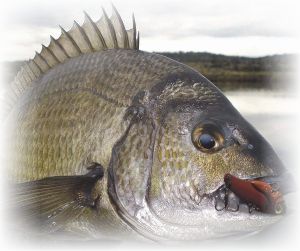 Presented from Issue 106, October 2013
Presented from Issue 106, October 2013
The start of daylight savings excites the trout fisher as it signifies the general start to the mayfly season; an insect that causes many a trout angler to become obsessed, chasing that hatch like a moth to a flame. Many anglers who chase trout also target bream but at this time of year, as trout anglers are in such a mayfly-induced trance, thoughts of bream become nullified. For the sneaky bream angler, this is a gift, paving the way for cheeky little solo sessions and all-round good times for you and your mates!
- Written by Stephen Smith - Rubicon Web and Technology Training
- Category: Bream
- Hits: 6725
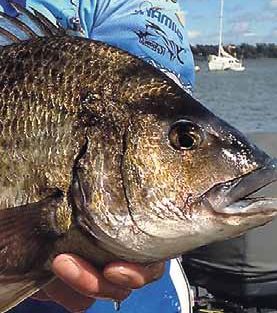 Presented from Issue 101
Presented from Issue 101
What is it about Bream?
While growing up I had the fortune of spending summer holidays at arguably one of the best bream fishing waters in Australia in Ansons Bay. Being young and eager just to feel the weight of a fish on the rod, catching bream was often derailed by chasing the abundant cocky salmon and silver trevally. While these species were on the chew, getting the buzz out of hooking and landing a fish was too much of a temptation. Often schools of bait fish would be busted up in the bay given away by the tell tail signs of seagulls and terns diving in to pick up the scraps left by the salmon as they slammed the abundant anchovies, or what the locals called “sardines”.
- Written by Stephen Smith - Rubicon Web and Technology Training
- Category: Bream
- Hits: 7821
Read more: Bream Lessons and memories from Ansons Bay - Grant Stingel
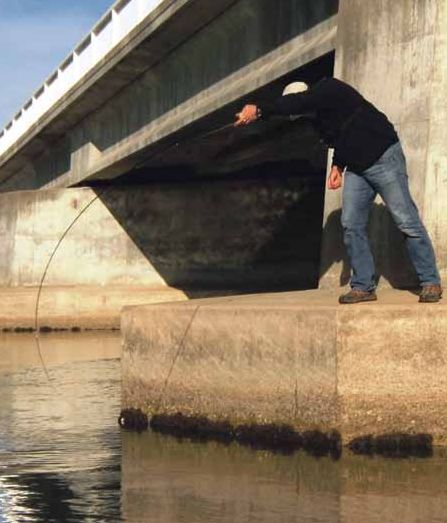 Presented from Issue 99
Presented from Issue 99
The annual spawning run or should I say flood of bream to the Scamander River is well underway. Earlier in autumn small schools of adult fish accumulated around the snags in the lower channel of Georges Bay ready for the long run south. When their numbers built up they made the mad dash down the coast and at times could be seen skirting the rocks of St Helens Point as they went.
Along the way they were joined by fish from Dianas Basin and Wrinklers Lagoon when these lagoons were open to the sea. At the same time fish travelled north from Four Mile Creek and Henderson’s Lagoon massing in the surf at the mouth of the river. At the top of the incoming tide fish moved in through the mouth of the river and gathered around the best two snags the Scamander River has to offer- the bridges. Now in late winter, their destinations are the long stretches of brackish water that will provide the right environment for the food their progeny will need after they hatch.
- Written by Stephen Smith - Rubicon Web and Technology Training
- Category: Bream
- Hits: 10842
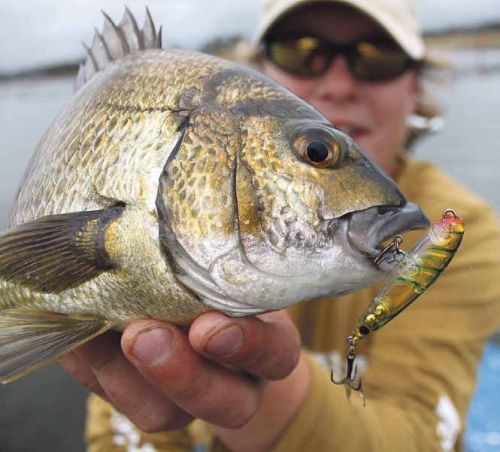 Presented from Issue 96
Presented from Issue 96
I don’t think fishing gets any better than watching something come up to the surface and eat a lure off the top. If you’re like me and you love chasing those big Tasmanian bream on lures, then you might have considered casting a surface lure at one time or another. Plenty of people might tell you that “it’s a waste of time”, “black bream don’t like surface lures” or “the water is too cold down here”. Any other number of reasons not to do it might come up. I’m writing this article in the hope that I can disperse that myth and instil confidence in anyone who remains a sceptic. For last three years I have sought out bream on topwater lures in almost every recognised bream estuary, through every month of the year and in every weather condition. You might be surprised to learn that throughout this time I have had very, very few days where I didn’t get at least one fish.
Some days are definitely harder than others but in the end, good things come to those who wait. Hopefully I can pass on some information through this article that will help you in your search for that big topwater bream.
- Written by Stephen Smith - Rubicon Web and Technology Training
- Category: Bream
- Hits: 9685
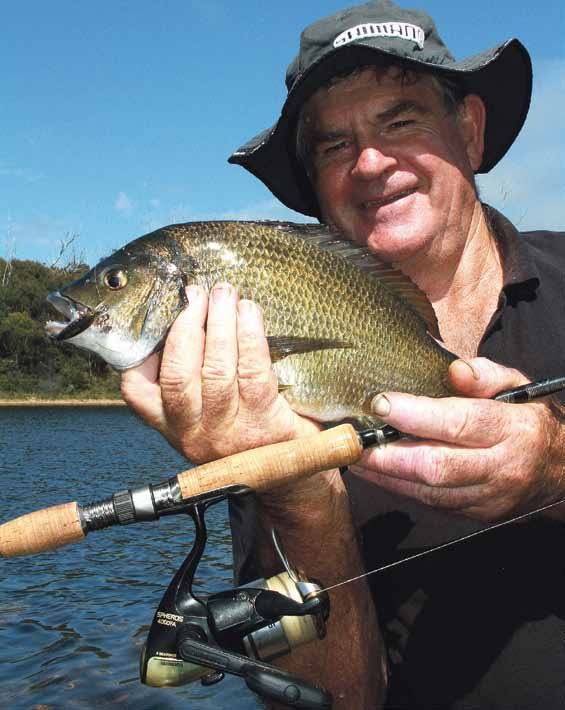
Presented from Issue 96
Look and Learn
As I passed Wrinklers lagoon I noticed for the first time this summer the lagoon had been released. The spoil piles still remained where the excavator had dug an opening to the sea, slowly being eroded by the ever widening channel as my favourite lagoon disgorged its tannin rich waters. My mind started racing with questions. How had the high water levels of winter and spring affected the fishing? Would the large bream from the year before still be there? How would the abundance of water birds affect the fishing? As the water level dropped and the flats began to appear, it became evident that the black inky mud of the year before had been overlaid by clean yellow sand and the lagoon now contained far more weed. How would this affect things? There is really only one way to find out.
- Written by Stephen Smith - Rubicon Web and Technology Training
- Category: Bream
- Hits: 5195
Presented from Issue 94
With the cold and wet winter days now behind us, as we move into the peak of spring, we can look forward to some truly spectacular fishing ahead.
As Matt Byrne details here, mid-late spring is the prime time to hit our popular coastal estuaries and rivers in search of our iconic sport fishing species – the southern black bream.
- Written by Stephen Smith - Rubicon Web and Technology Training
- Category: Bream
- Hits: 9794
Bream on Fly
Tasmanian Bream are a fantastic sports fish that offer the Tasmanian angler a challenging and rewarding day on the water. Black Bream, in Tasmanian waters, have been able to grow to impressive sizes due to the limited angling pressure they receive and the healthy estuary systems they live in. Bream up to 2.5 kg are not uncommon in our waters and these very old fish are often seen and caught amongst schools of bream in the upper tidal reaches of a river during the spawning season.
- Written by Stephen Smith - Rubicon Web and Technology Training
- Category: Bream
- Hits: 7365
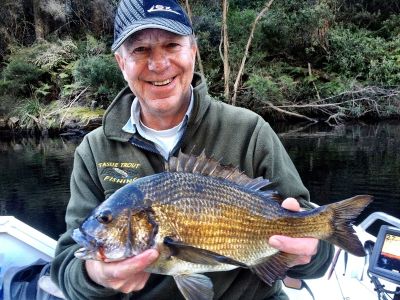 NE Breamin" 28/10/2012
NE Breamin" 28/10/2012
We had a magnificent weekend away up the coast with the family and Johnny this weekend just gone. My wife somehow had another weekend off work (which never seems to happen) so I decided to take them away to our block up the bay. We hit the road around mid-morning Saturday and slowly made our way to the magnificent NE Coast. We was in no hurry to arrive, as the plan was to do a spot of Breaming in the afternoon and basically just relax and enjoy the weekend.
- Category: Bream
- Hits: 6555
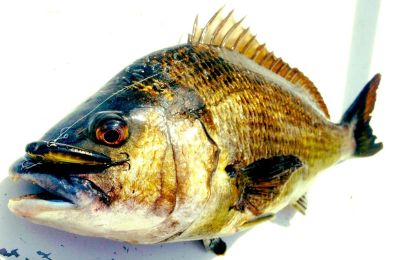 East Coast Bream
East Coast Bream
Feels like years since I have posted a bit of a report, so I thought I would share a couple of recent trips Johnny and I have had to the East Coast chasing a few Bream.
Our first trip was early last week where we decided to head down for a look around to see what the Bream were up to.
- Category: Bream
- Hits: 8234
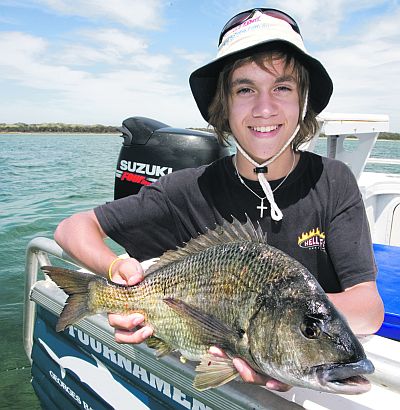 You can help bream research
You can help bream research
Dr James Haddy.
Do you want to be a recreational research angler? Have you ever wondered how old a bream is?. Been concerned about environmental flows into our estuaries or thought about how climate change might affect fish abundance. If so you might be able to help staff and students from the Australian Maritime College answer these questions by participating in a black bream research project as a recreation research angler.
- Category: Bream
- Hits: 7746
Current TFBN
Click above for current issue content. The current issue of TFBN is extensive and topical. In Tackle Stores, Newsagents and by subscription.
Delivered to your door for $48 for 2 years (8 issues). To subscribe, send Mike $48 via www.paypal.com.au . (Basic instructions are here) The email is at Contact Us. Your address will be included from PayPal.
Or phone Mike with your c/c handy on 0418129949
Please ensure your details are correct, for Mike to organise delivery.
TFBN Newsletter Sign up Form
Why not submit an article ?
When you have finished for the day, why not have a brag about the ones that didn't get away! Send Mike an article on your fishing (Click here for contact details), and we'll get it published here. Have fun fishing - tasfish.com
Category Descriptions
Here is a list of all of the Article Categories. The number in Brackets, eg (13) is the number of articles. Click on Derwent River and all articles relating to the Derwent will be displayed in the central area.
Articles by Category
-
Rivers (3)
-
Saltwater and Estuary Fishing (149)
-
Kayak Fishing (34)
-
Lakes (1)
-
Great Lake (62)
-
Lake Leake (52)
-
Woods Lake (16)
-
Lake Augusta (11)
-
Huntsman Lake (13)
-
Lake Pedder and Gordon (10)
-
Lake Dulverton (5)
-
Lake Crescent (6)
-
Tooms Lake (10)
-
Lake Mackintosh (2)
-
Lake Barrington (5)
-
Little Lake (8)
-
Meadowbank Lake (5)
-
Lake King William (7)
-
Lake St Clair (2)
-
Western Lakes (12)
-
Arthurs Lake (35)
-
Lake Echo (7)
-
Four Springs (54)
-
Lake Sorell (7)
-
Lake Burbury (6)
-
Other Lakes (57)
-
Brushy Lagoon (18)
-
Little Pine Lagoon (5)
-
Penstock Lagoon (16)
-
Brumbys Creek (7)
-
-
Events (48)
-
Estuary Fishing (0)
-
Coastal Catches (46)
-
Super Trawler (46)
-
IFS, DPIPWE, MAST and Peak Bodies (435)
-
Commercial Interests (98)
-
Other (24)
-
TFBN Back Issues (8)
-
Fly Fishing (67)
-
Trout Fishing (250)
-
Meteorology and Weather (8)
-
Jan’s Flies (50)
-
Tuna Fishing and other Game Fishing (86)
-
Cooking Fish (19)
-
Fishing Information (1)
-
Fishing Books (8)
-
Videos (5)
-
Tackle, Boats and other Equipment (146)
-
World Fly Fishing Championship 2019 (2)
Popular Tags
windyty.com
Visit https://www.windyty.com/
Rubicon Web and Technology Training
Hello everyone, I thought it would be a good time to introduce myself.
My name is Stephen Smith and I have been managing the website tasfish.com since May 2009.
It has been an epic journey of learning and discovery and I am indebted to Mike Stevens for his help, support and patience.
I am developing a new venture Rubicon Web and Technology Training ( www.rwtt.com.au ). The focus is two part, to develop websites for individuals and small business and to train people to effectively use technology in their everyday lives.
Please contact me via www.rwtt.com.au/contact-me/ for further information - Stephen Smith.
From the Archives ... (last chance)
Early season - Bob McKinley
Presented from Issue 105, August 2013
Bob is a professional fishing guide and guides for trout and estuary species. Check him out at www.fishwildtasmania.com
There are several things we look for in our early season trout waters. It is still winter and cold, so some of the things to consider are: Altitude as this dictates the water temperature and therefore feeding activity. Food for the fish. Availability of trout food is generally dictated by the quantity and quality of weed beds.
Quantity of fish.
Three waters which I believe fit all three requirements are:
Read more ...
